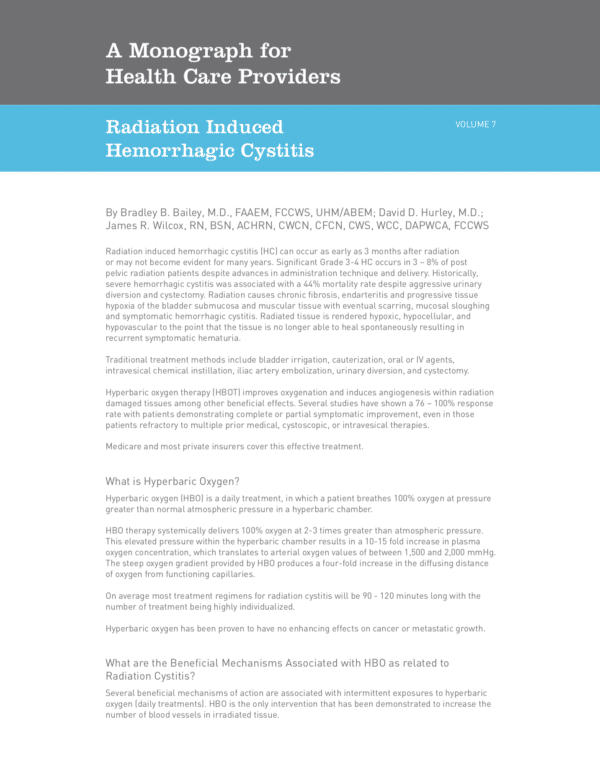Monograph: Radiation Induced Hemorrhagic Cystitis
Radiation induced hemorrhagic cystitis (HC) can occur as early as 3 months after radiation or may not become evident for many years. Significant Grade 3-4 HC occurs in 3 – 8% of post pelvic radiation patients despite advances in administration technique and delivery. Historically, severe hemorrhagic cystitis was associated with a 44% mortality rate despite aggressive urinary diversion and cystectomy. Radiation causes chronic fibrosis, endarteritis and progressive tissue hypoxia of the bladder submucosa and muscular tissue with eventual scarring, mucosal sloughing and symptomatic hemorrhagic cystitis. Radiated tissue is rendered hypoxic, hypocellular, and hypovascular to the point that the tissue is no longer able to heal spontaneously resulting in recurrent symptomatic hematuria.
Traditional treatment methods include bladder irrigation, cauterization, oral or IV agents, intravesical chemical instillation, iliac artery embolization, urinary diversion, and cystectomy.
Hyperbaric oxygen therapy (HBO) improves oxygenation and induces angiogenesis within radiation damaged tissues among other beneficial effects. Several studies have shown a 76 – 100% response rate with patients demonstrating complete or partial symptomatic improvement, even in those patients refractory to multiple prior medical, cystoscopic, or intravesical therapies.
Medicare and most private insurers cover this effective treatment.




